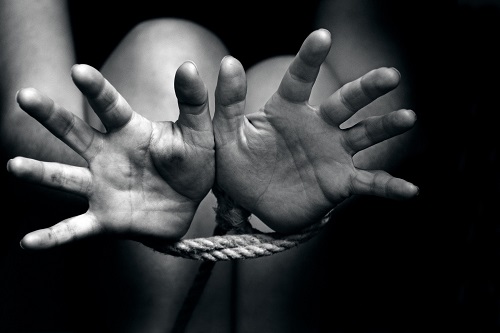By
Ricardo Swire
The United Nations Office on Drugs and Crime (UNODC) describes human trafficking as “an act of recruiting, transporting, transferring, harboring or receiving a person through use of force, coercion or other means for the purpose of exploiting them.”
Caribbean patterns identify most victims as Guyana, Haiti, Dominican Republic (DR) and Jamaica nationals. Statistics denote eighty percent of human trafficking involves sexual exploitation, twenty percent labor manipulation.
In fifty-four percent of human trafficking cases strangers were the recruiters. Recognized individuals recruited forty-six percent of victims. Thirty-six percent of recruiters were male, fifty-eight percent female, six percent combine teams. Intelligence reports inform that Guyana is proliferated by “matrimonial” sales of underage girls to men. A subtle form of human trafficking and modern slavery, practiced in full face of an unquestioning society. After marriage the sale of each girl becomes final and forever, in the name of either tradition or religion.
According to reports a particular DR criminal syndicate prospers from that country’s lucrative child-sex tourism industry. An average of eight hundred children per month secretly moved across select crossings, at the DR’s three hundred and seventy kilometer border with Haiti. Criminal satellites on Haiti’s side profit most as masterminds of the minimum US$90 per child human cargo business. Since 2006 the DR Immigration Department only documented two human trafficking convictions. A prosperous Haitian trafficker boasted his illegal caravans of children traverse the land boundary with the DR protected by privately paid national border patrol, military and immigration officials.
On the island of Jamaica human traffickers administer a flourishing trade. Jamaica Constabulary Force (JCF), Anti-Trafficking in Persons & Intellectual Property Vice Unit officers’ two hundred missions rescued more than twenty-four children that included twenty-one Honduran boys. In another scenario JCF’s officers saved more than forty Haitian, Burmese and Indian human trafficking victims. Girls as young as thirteen years of age were transformed to full-fledged prostitutes. Some lived independently, others in secret holding areas, both categories used as nightclub dancers.
Some Caribbean wayfarers who travel with a valid passport and work permit also end up in predicaments of psychological abuse and debt bondage. After arriving abroad such migrants become victims of sex trafficking. Passports are confiscated and they are aggressively threatened. In many cases the migrants are forced to repay unexplained expenses. Subsequently situations become inescapable.
The Organization of American States’ (OAS) Anti-Trafficking in Persons Unit Coordinator, in the Department of Public Security, opined a number of tropical Caribbean islands, internationally favored as tourist destinations, “are now at the center of a growing sex tourism industry.” He added there is the real possibility CARICOM’s Free Movement of Skilled Nationals may contribute to increased human trafficking numbers by providing a veil.
The Revised Treaty of Chaguaramas, Article 46, legitimized free movement of skilled nationals and CARICOM community entrepreneurs, desirous of establishing businesses. Freedom to live and work across the CSME is granted with possession of a Certificate of Recognition of CARICOM Skills Qualification. The Caribbean already qualifies as transit point for mostly male and female human trafficking victims en route to Europe, Asia and other Western Hemisphere countries. In several cases victims were connived to migrate to an “economically developed” territory, or tempted by false promises and offerings of high paying jobs. Traffickers successfully advertised fake work solicitations in local newspapers.
As one phase of the Tenth European Development Fund, Caribbean Single Market Economy’s (CSME), Economic Integration Program, a CARICOM Immigration and Customs Officers’ Train-The-Trainer seminar took place last week, the CARICOM Secretariat in Barbados the venue. “The roles and functions of border officers” designated focal points. Clarity and understanding of CSME’s “general” and “free” movement of persons (FMPs) additional agenda items.
Regional internal security records illustrate three Caribbean migration flows. The official outlines confirm factors affecting internal, intra-regional and outward migration movements are socioeconomic inequalities, tourism and human trafficking. Individual immigration archetypes indicate the majority of human traffickers and migrant exploiters are actually females, a possible personification of the “victim cycle” in which initial victims become victimizers.
Ricardo Swire
Ricardo Swire is the Principal Consultant at R-L-H Security Consultants & Business Support Services and writes on a number of important issues.



No Comments Yet!
You can be first to comment this post!